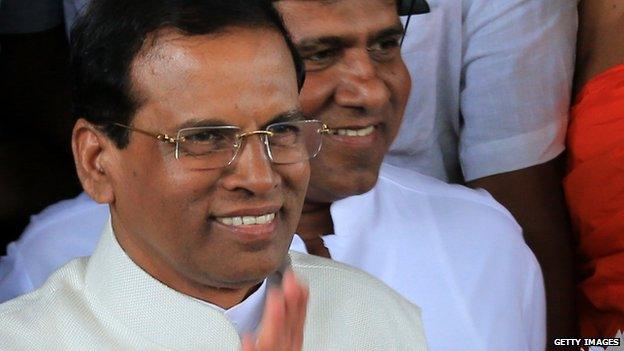Sri Lanka profile - Leaders
- Published

Maithripala Sirisena was sworn in as Sri Lankan president after a shock victory over veteran strongman Mahinda Rajapakse in a January 2015 election dominated by charges of corruption and growing authoritarianism.
Mr Sirisena was elected with 51.28% of the vote compared with Mr Rajapakse's 47.58%.
The former health minister, who united a fractured opposition to pull off an unlikely victory, promised sweeping reforms of the presidency and said he would transfer many of its executive powers to parliament.
He was elected on a tide of resentment against Mr Rajapakse, who rewrote the constitution after his re-election in 2010 to remove the two-term limit on the presidency and give himself more powers over public servants and judges.
Mr Rajapakse enjoyed huge support among majority Sinhalese voters after overseeing the end of a separatist war by ethnic Tamil rebels in 2009.
But critics say he failed to bring about reconciliation in the years that followed his crushing victory over the Tamil Tiger guerrillas.
Mr Sirisena's decision to run triggered a slew of defections and became a rallying point for disaffection with Mr Rajapakse and his powerful family.
Like Mr Rajapaksa, Mr Sirisena is from the majority Sinhala Buddhist community, but he has reached out to ethnic minority Tamils and Muslims and has the support of several small parties.
He was set to lead a motley coalition of ethnic, religious, Marxist and centre-right parties, which analysts said could hamper economic reform and encourage populist policies.